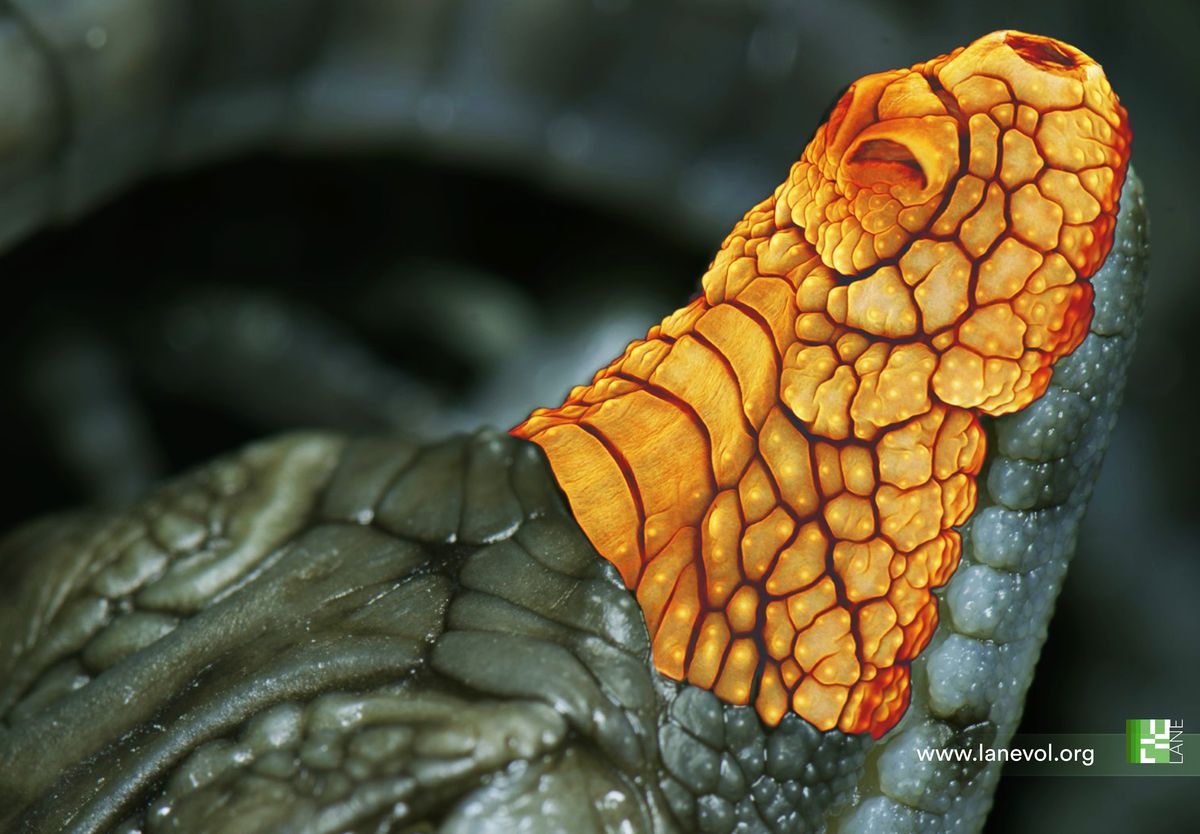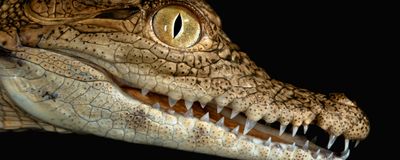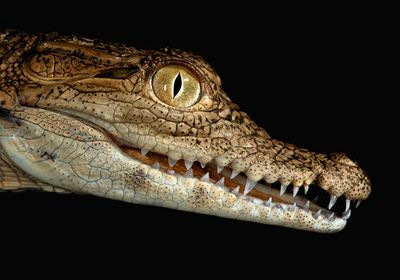ABOVE: Scales on a crocodile’s head form because of mechanical processes, not genetics. Michel Milinkovitch & Adrien Debry, University of Geneva; www.lanevol.org
Coming face to face with a mighty crocodile might scare the living daylights out of most people, but Michel Milinkovitch finds them beautiful. A biophysicist at the University of Geneva, Milinkovitch studies the development and evolution of vertebrate skin in crocodiles, with a focus on the biomechanics of the growth and evolution of scales. In 2012, he and his team found that the scales on a crocodile’s head are generated through physical processes, rather than being regulated by genetic drivers, but the exact mechanism of their development was unclear.1

Now, in a new study, Milinkovitch and his team reported that the polygonal head scales form due to the growth and compression of skin, which creates a self-organizing pattern of folds.2 These findings, published in Nature, reveal a simple evolutionary mechanism for the variation in shape and size of scales seen in diverse crocodile species.
Most vertebrate skin appendages—hair, feathers, and scales—develop in a pattern dictated by the interaction of functionally opposing molecules. This creates points of high protein concentration, interspersed by areas of low protein concentration, thus regulating the growth of precursors from which skin appendages can grow. The scales on a crocodile’s body develop through this mechanism. About a decade ago, Milinkovitch noticed that the scales on the reptile’s jaws and face differ from those on its body. He speculated that a mechanical process might underlie their formation.
Testing this theory was a long and arduous journey, since it’s not easy to get access to crocodiles for experiments. It took the team over 10 years to gather a sufficient number of animals. In the new study, the researchers first looked into how the head scales developed in an embryo. They imaged Nile crocodile embryos using light-sheet fluorescence microscopy over multiple days. What they observed was that long, rectangular scales appeared on the top jaw whereas smaller, polygonal scales arose on the side and bottom of the jaws. The team also noticed an increase in the stiffness of the skin and the number of folds as the embryo grew and more scales formed.
Like in other vertebrates, the skin is connected to additional layers underneath, like connective tissue, muscle, and bone. Milinkovitch hypothesized that if the skin grew faster, and thus became stiffer than the underlying tissue, it would buckle and fold inward. To investigate this theory, he and his colleagues injected epidermal growth factor (EGF), a protein that stimulates skin growth, into crocodile embryos and observed what happened to the head scales. These embryos exhibited a greater number of thinner scales on the upper jaw, while the scales on the lower sides of the jaws displayed a labyrinth-like pattern, showing that increasing the stiffness of the skin caused more inward folding. The researchers let some EGF-treated embryos hatch to see if the transient increase in skin growth had a lasting effect. The head scales on these crocodiles were somewhere in between—partially polygonal and labyrinthine—a shape and size that resembled the scales of another species, the Caiman crocodile. The team also hatched some embryos that they injected with EGF for a longer period and observed that these crocodiles had only labyrinthine scales.

To investigate if skin growth and stiffness played a role in the development of head scales in other crocodilian species as well, Milinkovitch created a computer model where they could input parameters of growth, physical properties, and locations of the tissue layers in the crocodile head to test if the scales output resembled the patterns observed in different wild species. The model faithfully mimicked the head scale pattern development of Nile crocodiles, as well as the labyrinthine scales from the EGF-treated embryos and juveniles. The researchers also observed the head scale patterns of the Marsh crocodile, spectacled Caiman, and American alligator species by adjusting the mechanical properties of the skin in the model.
“These computer simulations demonstrate that tissue mechanics can easily explain the diversity of shapes of certain anatomical structures in different species, without having to involve intricate molecular genetic factors,” said Ebrahim Jahanbakhsh, a computer engineer at the University of Geneva and coauthor of the study, in a press release.
- Milinkovitch MC, et al. Crocodile head scales are not developmental units but emerge from physical cracking. Science. 2013;339(6115):78-81.
- Santos-Durán GN, et al. Self-organized patterning of crocodile head scales by compressive folding. Nature. 2024:1-9.




